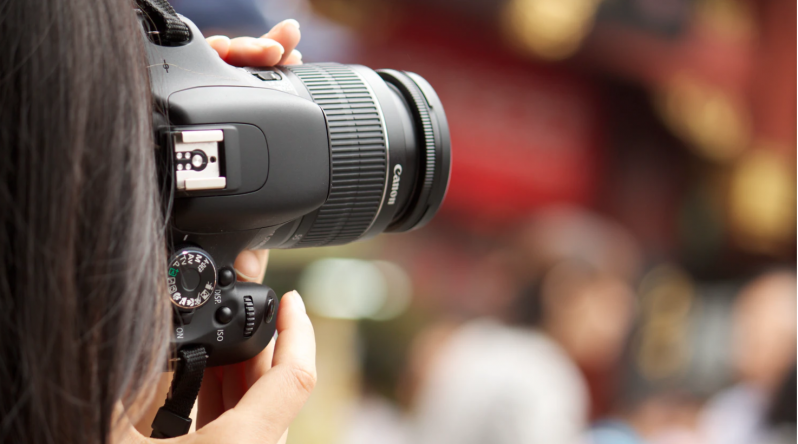 Perspective matters. Let’s use a common real-world example – traffic. Being stuck in traffic is a terrible, soul-snatching experience. All those blinking red lights. Being surrounded by aggressively weaving cars. Boxed in with no place to move. Add in the cacophony of horns and you likely feel some (read a lot) of frustration, potentially even rage.
Perspective matters. Let’s use a common real-world example – traffic. Being stuck in traffic is a terrible, soul-snatching experience. All those blinking red lights. Being surrounded by aggressively weaving cars. Boxed in with no place to move. Add in the cacophony of horns and you likely feel some (read a lot) of frustration, potentially even rage.
But let’s zoom out. Imagine magically floating out of your car and seeing those hundreds of cars from the sky. Envision the necklace of lights, the disparate shapes, and the rainbow of automobile colors. The world goes silent. Now, we have the exact same circumstance, but it is perceived from a distance. A physical distance. As a result, the same traffic jam may appear beautiful or even inspire tranquility now. Perspective and distance matter – especially when it comes to making decisions.
Is A Forest Made of Trees or Do Trees Make a Forest?
Being able to “see the forest for the trees” is a common refrain heard across meeting rooms in government offices and private sector boardrooms. It means taking the long-view on a given topic (i.e., forest) instead of getting bogged down in the details (i.e., trees). It means zooming out and evaluating something through the lens of distance – distance in terms of both time and space. But often also distance in terms of emotion. It means understanding the second and third-order impact of a decision (the reaction to an action and the reaction to a reaction) instead of just the immediate impact.
But how does one actually see the forest and not just the trees? Imagine you are stymied by a perplexing personal decision. Let’s take a couple of practical examples. Maybe you are considering a change to a meaningful relationship? Or contemplating moving on from your current job to the another? Or trading in your 2-year old car for a new one?
You can approach this situation in multiple ways. You can go with your gut/intuition. Basically trust what “feels” right based on past life experiences. Similarly, you could sleep on it and see how you feel when you wake up. Essentially, let your unconscious mind guide you. Yet another option is to compile a list of “pros and cons” and then make a systematic, calculated, weight-driven choice. Any of these approaches can work. None of these options is better or worse than the other.
Having Imaginary Friends Is Good For You
However, there is a superior decision-making approach supported by science. Not surprisingly, it involves perspective. All you need to do is pretend that your friend is asking for your help. That is, your friend is asking for your perspective on the same question you are noodling over. Voila! By creating physical and intellectual distance in the decision-making process, you can come to a better outcome. Zoom out and you find that the world looks a whole lot different.
Perspective-shifting when making decisions works in part because it divorces us from our baser emotions. It allows us to think more rationally and potentially more clearly. When we zoom out, we tend to consider a greater number of data points because the aperture within our minds is simply wider. We are more open to alternative possibilities.
Indeed, another zooming out, perspective-shifting tactic involves questioning the impact of a decision from the future you. For example, Jeff Bezos famously uses a “regret-minimization” framework to guide his decisions. He projects to the end of his life (or age 80) and asks if doing (or not doing) something will cause him regret. Others opt to ask themselves “Will this matter to me 12 months from now?”. Time – even when imaginary – brings clarity to how we make decisions.
Wide Angle or Telephoto Lens?
I have written previously about decision-making in the context of one-way and two-way doors. As humans, we make decisions all the time. Some decisions have little to no consequence on our lives or the well-being of those around us. Other decisions loom large – both in the moment and when looking back at our lives. When wrestling with these harder decisions, it helps to create distance – emotional distance, physical distance, chronological distance.
Perspective matters. A lot. Intentionally changing your perspective unlocks how you look at the decision itself and it re-frames what really matters. Professional photographers use wide-angle lenses to bring in and capture more of scene. Likewise, so should you. The next time you have a tough decision to make, zoom out and think of how much you love sitting in traffic.
Wagish Bhartiya is a GovLoop Featured Contributor. He is a Senior Director at REI Systems where he leads the company’s Software-as-a-Service Business Unit. He created and is responsible for leading a team of more than 100 staff focused on applying software technologies to improve how government operates. Wagish leads a broad-based team that includes product development, R&D, project delivery, and customer success across state, local, federal, and international government customers. Wagish is a regular contributor to a number of government-centric publications and has been on numerous government IT-related television programs including The Bridge which airs on WJLA-Channel 7. You can read his posts here.





Great tips for remembering that perspective matters!
Thank you, Wasgish, for sharing this article! A great read and something to remember when making a difficult decision.